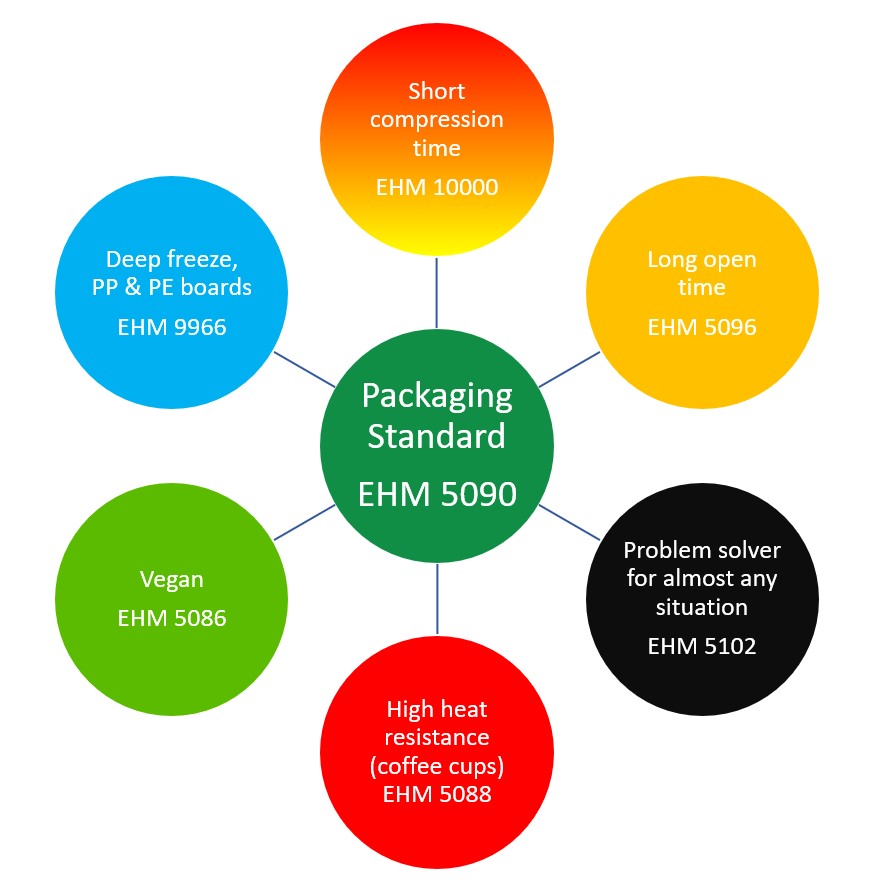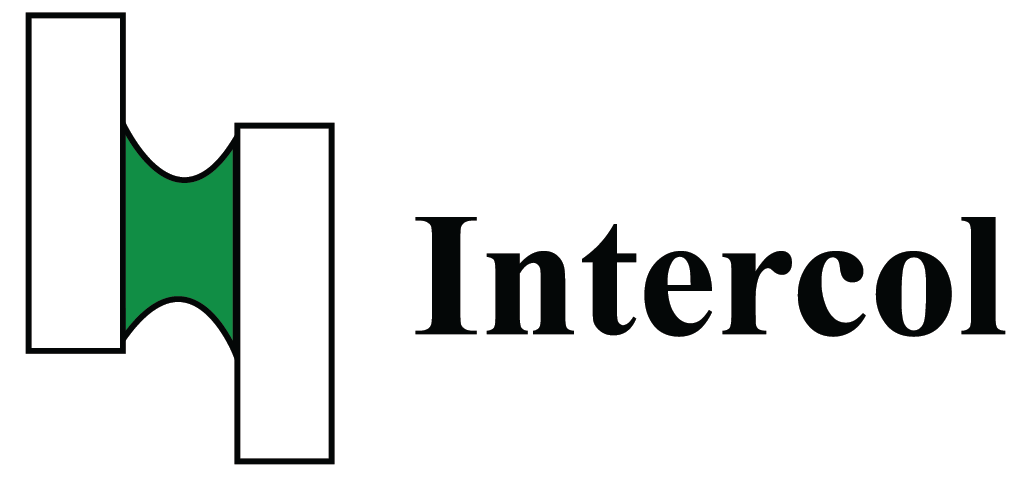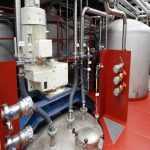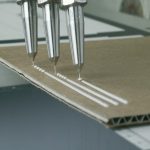A hot melt adhesive is an adhesive that melts at higher temperatures of approx. 100°C and is often processed at temperatures of 120°C-200°C. Due to the large difference with the ambient temperature, hot melts can quickly cool down to their solid state. This makes it possible for many industrial applications to glue products and transport them over the production line in a time frame of approximately 1 second.
In principle, everything that can melt and glue can be called a hot melt.
It all started with the EVA Hot Melt
An EVA hot melt owes its name to the main raw material in hot melt, although it is usually used, but for 35% of the formulation. The remaining ingredients are additives such as resin to increase the tack, and a wax to increase the binding speed and reduce viscosity.
Benefits of EVA Hot Melt Adhesives
An EVA hot melt has had tremendous success in the food packaging and shoe manufacturing industries. Machines could be designed more compactly and production environments required less space. In addition, EVA hot melts free of volatile solvents, so also in terms of environment and working conditions EVA hot melt offered enormous advantages.
Disadvantages of EVA Hot Melt Adhesives
EVA hot melt adhesives are generally processed at approx. 160°C, the adhesive systems operate under high pressure. Some caution is advised when working with hot melt adhesives. In our blog: “how to change an adhesive” you can also read more about working safely with hot melt adhesives.
EVA hot melt adhesives have a tendency to “crawl”, under high structural stress the adhesive bond can be too plastic and move too much with the forces exerted on it. This can also occur at temperatures above 50°C. Likewise, at low temperatures, below 0°C, an EVA hot melt may lose its strength as the adhesive film becomes hard and brittle.
Advantages of Polyolefin Hot Melt Adhesives
Polyolefin hot melt adhesives seem to be a perfect successor to EVA hot melt adhesives, the heat resistance can increase enormously with these hot melt adhesives, as well as the freezing resistance. Moreover, many polyolefin hot melt adhesives are more thermostable than EVA hot melt adhesives, which can contribute to less glue burning and a more reliable production process.
PUR Hot melt adhesives
In order to be able to really constructively bond with large production quantities in automated production environments, the PUR polymer has been put into use. PUR was already known from cold wood bonding joints for the construction and furniture industry. By adapting PUR adhesives to warmer application temperatures, the advantages of faster processing with a hot melt built into PUR adhesives have been realised.
PUR hot melt adhesives are reactive, which makes them a very special group of hot melt adhesives, because most hot melt adhesives are thermoplastic. The reactivity also leads to additional health risks and more thoughtful handling in general, such as taking care of the adhesive equipment in which PUR hot melt is incorporated.
PSA Hot melt Adhesives
PSA hot melt adhesives have also been around for a long time. This group uses water-based and solvent-based adhesives in the self-adhesive field. Not only because of the fast processability and better environmental conditions, but also because hot melt adhesives can be applied with a thicker layer on materials such as tape and labels. Because of the thicker adhesive layer it is easy to produce stronger self-adhesive materials that provide a higher grip adhesion, also known as Rolling ball tack and Loop tack. Use in self-adhesive applications can lead to new products, such as Duct tape, but also production lines that apply self-adhesive labels can produce faster due to the increased instant adhesion.
Hot Melt Adhesive formulations
Hot melt adhesives can be formulated almost endlessly to develop the best adhesive for a specific application. Adhesion range, open time, bonding time can be set according to priorities.





